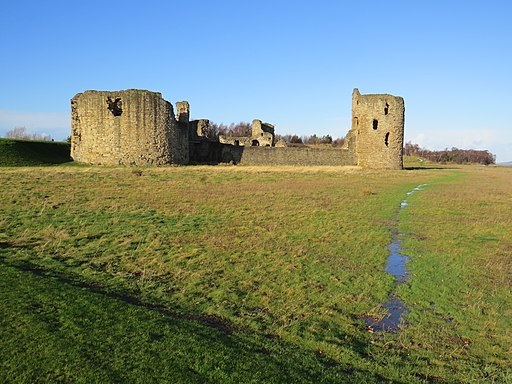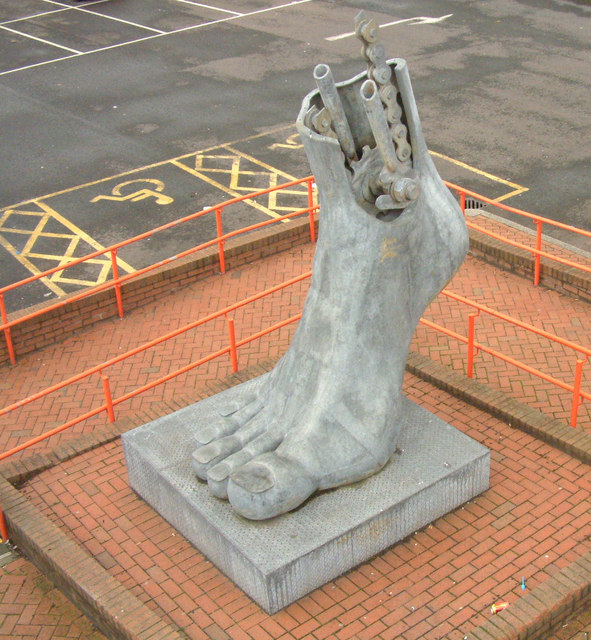Flint, Wales is a hidden gem located in the northwest corner of the country. This small village is known for its stunning natural beauty, sitting on the border of the Snowdonia National Park and the Irish Sea. It is a popular destination for hikers and those looking to escape the hustle and bustle of the cities.
Close to Liverpool, Flint is the third largest town in Flintshire and has a population just shy of 13,000 (according to the 2011 census.)
Where did Flint’s name come from?
Along with its natural beauty, Flint is renowned for its rich cultural history. The name of the town was first recorded in 1277 in the French form le Chaylou; this equates to the modern French Caillou, which translates to “gravel.” Founded by the Normans in the 12th century, the town owes its name to the flint platform on which the infamous Flint castle was built.
Flint Castle

Flint Castle was one of the first castles that Edward I built in Wales as part of his ‘iron ring’ to secure his hold on the country. These castles, along with their associated boroughs, were intended to be both a source of military strength and a symbol of Edward’s sovereignty in Wales.
The castle, now in ruins, was the site of many sieges. In 1282, the Welsh leader Llywelyn ap Gruffudd made an unsuccessful siege of the castle; Twelve years later, both the castle and town were attacked by the forces of Madog ap Llywelyn, who led the 1294-95 Welsh revolt against English forces in Wales. The castle eventually fell after a siege by the forces of Owain Glyndwr in 1401.
The castle is most notorious for a significant moment in British history. In 1399, Flint castle was the site where King Richard II was handed over to his cousin – and rival to the crown – Henry Bolingbroke. He would later become King Henry IV. This site marks a huge transfer of power and a turning point in history. From here King Richard was escorted to London, abdicated his throne and died, allowing King Henry IV’s reign to begin. This fateful moment at Flint Castle has been documented in the Shakespeare play Richard II, in Act III Scene III.
This once magnificent castle has been reduced to little more than a pile of ruins. However, you can still see remains of the uniquely structured castle, including the round ‘Donjon tower’, unusually isolated from the rest of the inner ward.
The crumbling castle is a reminder of a turbulent period in Welsh history that is still prevalent in the culture and landscape of the country today.
Visiting Flint
When visiting Flint, visitors can experience a range of activities, from walking the scenic trails to enjoying local craft beer and cider. The village is home to a charming selection of shops, pubs, cafés and restaurants where visitors can sample some of the region’s renowned seafood.
This quaint town also has its fair share of attractions, from the castle ruins to the footplate.
The footplate

The footplate is a 3m tall metal statue of a foot. Erected in 1999, it is a tribute to the railway workers who ran a short-lived railway line in Flintshire. The whole statue is made up of a bronze figure of a foot and four ‘footplates’ or sections depicting the types of engines which ran on the line. The footplates are cast with words such as ‘Flint‘, ‘Mold‘, ‘Hope‘ and ‘Saltney‘ to commemorate the communities linked by the railway. The statue is a reminder of the vital role played by the railway in connecting these small communities that would otherwise be fairly isolated from the rest of Wales.
Nature
Nature lovers should not miss out on the opportunity to take a boat trip around the Dee Estuary, which is home to numerous species of birds. The estuary is also home to the grey Atlantic seals, which can be spotted during the winter months. Flint is also the perfect base for a range of outdoor activities, such as hiking, fishing and cycling.
The best hikes in Flint
The small town of Flint is home to some of the most beautiful hikes in the country. The area is full of natural beauty and a variety of trails and routes that are perfect for hikers of all levels, whether you’re looking for a short, easy stroll or an epic trek.
One of the most popular hikes in the area is the Flint Castle and River Dee Trail. This easy-to-moderate trail takes you past the ruins of the 13th-century Flint Castle and along the banks of the River Dee. Along the way, you can take in stunning views of the ancient castle, the picturesque river, and the surrounding countryside. The trail is approximately seven miles in total and can be completed in around three hours.
If you’re looking for a more challenging hike, then Offa’s Dyke Path is an excellent option. This long-distance trail stretches for 177 miles along the border between England and Wales, and passes through several towns and villages along the way. The path is divided into four sections, and the stretch through Flint is considered to be one of the most beautiful and well-maintained sections. You can expect to enjoy spectacular views of the River Dee, the Welsh countryside, and the remains of Offa’s Dyke.
For those looking for a shorter, family-friendly hike, the Clwydian Way is just the ticket. This scenic path follows the Clwydian Range of hills and passes through some of the most beautiful landscapes in Wales. Along the way you can explore the ruins of multiple old castles, stop off for a picnic, and take in the stunning views. The trail is approximately 11 miles in total.
The Flint Coastal Path
The Flint Coastal Path offers pretty views of the North Wales coast. The path starts in Prestatyn and ends at the Dee Estuary, a total of 8 miles. Along the way, you’ll be able to take in plenty of wonderful sights, including the imposing hills of the Clwydian Range, the vast sand dunes of Talacre, and the local wildlife and birds of the estuary. With plenty of places to stop along the way, it’s the perfect walk for any nature lover, as well as for anyone looking for a relaxing stroll along the North Wales coastline.
It’s not hard to see why Flint has become a popular destination for hikers and nature lovers. With its stunning natural beauty, rich history, and abundance of outdoor activities, visiting Flint is the perfect way to escape the hustle and bustle of the cities and enjoy some time in the countryside.

